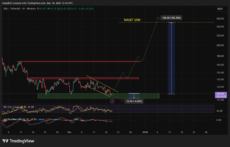OpenAI aims for a trillion-dollar IPO, possibly going public as early as the end of 2026?
OpenAI is reportedly preparing for an IPO as early as the end of 2026, with a potential valuation of up to 1 trillion dollars. The minimum fundraising target under consideration is 60 billion dollars, and the actual amount may be even higher.
According to foreign media reports, three sources familiar with the matter said that OpenAI is paving the way for an initial public offering (IPO), a deal that could value the company as high as 1 trillion USD, making it one of the largest IPOs in history.
Some of these sources revealed that OpenAI is considering submitting a listing application to securities regulators as early as the second half of 2026. Meanwhile, according to the earliest report by The Wall Street Journal, OpenAI could go public as soon as 2027.
In preliminary discussions, the lower limit of the financing scale considered by the company is 60 billion USD, with the actual amount possibly being higher. Sources also emphasized that the relevant negotiations are still at an early stage, and specific figures and timelines may be adjusted according to changes in business growth and market conditions.
The company’s Chief Financial Officer, Sarah Friar, has told some colleagues that the company plans to go public in 2027, but some advisors expect it could happen as early as the end of 2026. An OpenAI spokesperson responded:
“An IPO is not our focus, so we could not have already set a date. We are building a sustainable business to advance our mission of ensuring that everyone benefits from artificial general intelligence (AGI).”
In a live broadcast this Tuesday, Altman spoke about the potential listing:
“Given our future capital needs, I think it’s fair to say this is the most likely path we’ll take.”
This IPO preparation reflects a new sense of urgency within the developer of ChatGPT. After completing a complex restructuring and reducing its reliance on Microsoft, the company is seeking to leverage public markets for more efficient financing and to use public stock offerings for larger-scale mergers and acquisitions, thereby supporting CEO Sam Altman’s plan to invest trillions of dollars in building AI infrastructure.
According to sources, the company expects to reach an annualized revenue of about 20 billion USD by the end of the year, but its losses are also expanding, with a current valuation of about 500 billion USD.
It is understood that OpenAI was initially founded in 2015 as a non-profit organization. Several years later, the company restructured its architecture, with the non-profit entity overseeing and controlling the for-profit division. Its main goal is to ensure the safe development of artificial intelligence technology, rather than pursuing profit like traditional companies.
This week, OpenAI underwent another restructuring. The company is still controlled by a non-profit organization, but the organization is now called the “OpenAI Foundation,” which holds a 26% stake in the OpenAI Group and has the right to receive additional shares after the company achieves certain milestones. This means that the non-profit entity occupies an important position in OpenAI’s financial returns.
If the IPO is successful, the company will bring huge returns to investors such as SoftBank, Thrive Capital, and Abu Dhabi’s MGX. Microsoft, as one of the largest shareholders, has invested a total of 13 billion USD and now holds about 27% of the company’s shares.
This series of preparations comes at a time when artificial intelligence is driving global stock markets to soar. Earlier this year, AI cloud computing company CoreWeave went public at a valuation of 23 billion USD, and its stock price has roughly tripled since. Just this Wednesday, Nvidia became the first company with a market capitalization exceeding 5 trillion USD, further consolidating its core position in the global AI wave.
Disclaimer: The content of this article solely reflects the author's opinion and does not represent the platform in any capacity. This article is not intended to serve as a reference for making investment decisions.
You may also like
NEAR Supported on Solana: A Revolutionary Cross-Chain Leap for Users
Bitwise Sees Solana Hitting Records in 2026: Major Rally Incoming?

Intuit USDC Integration: A Revolutionary Step for Crypto Tax and Accounting
Altcoins Under Pressure After Sharp ETH/BTC Drop, Traders Watch Next 48 Hours
